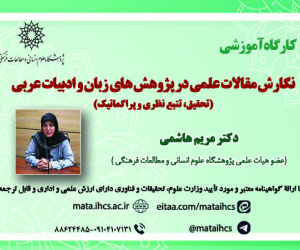تحلیل ممانعت ارائه دهندگان خدمات هوشمند حمل و نقل برای رانندگان جهت همکاری با رقبا
آرشیو
چکیده
سامانه های هوشمند حمل و نقل به عنوان بافت جدید جابجایی متقاضیان سفر شهری از مدل اقتصاد پلتفرمی، گیگ محور و تسهیمی و فناوری مبتنی بر هوش مصنوعی و کلان داده ها برخوردارند که برای جذب حداکثری منابع در بازاری دو طرفه فعالیت می کنند. برخی بازیگران مایل هستند که این منابع را به صورت انحصاری به کار بگیرند لذا برای رانندگان به عنوان شریک ارائه خدمت، این محدودیت را جهت عدم همکاری با رقبا اعمال خواهند نمود. یافته های این پژوهش نشان می دهد که شناسایی و تحلیل این محدودیت توسط رگولاتور و یا مرجع صالح به سادگی محدودیت های همکاری سابق بر آن مثل قراردادهای عدم رقابت نخواهد بود. مسائلی چون جانمایی ابرپیوندها برای ایجاد توافق مشروع، جهت دهی الگوریتم های ارسال سفر، تطبیق و قیمت گذاری برای اقدام و یا القای محدودیت و یا توجیهات نرم افزاری ، همگی اقداماتی است که از ایجاد محدودیت خبر می دهد. بعد از شناسایی هم تحلیل مشروعیت عمل آنان به سادگی شناسایی ماهیت روابط حقوقی آنها نیست. ما این ممانعت را به جهت ماهیت خوداظهارانه آنها مبنی بر واسطه گری نمی پذیریم اما محور اصلی وضعیت اقدامات، بر قدرت بازاری و محدوده هدف مانعیت توسط سامانه ها میان به کارگیری همزمان یا نصب همزمان پلتفرم ها قرار خواهد گرفت که غالبا منتج به عدم مشروعیت خواهد شد. با احترام به آزادی رقابت و عدم حمایت بی دلیل از رقبا، ساختار کسب و کار و مقضیات حفظ شبکه بازار دو طرفه و بررسی واقعی موانع ورود نشان خواهیم داد که ایجاد این محدودیت تحت ضوابطی قابل پذیرش بوده یا بر اساس متغیرهای فوق، منجر به تغییر بار اثبات خواهد شد. این وضعیت در قلمرو قالب های حقوقی شناخته شده برای مانعیت و همچنین رویه های رقابتی هم قابل مشاهده است.Analysis of the prevention of providers of intelligent transportation services for drivers to cooperate with competitors
Intelligent transportation systems as a new context for the transfer of urban travel applicants have a platform economy model, gig-based and sharing, and technology based on artificial intelligence and big data, that attracts the most.resources in the market operate on two sides. Some players prefer to use these resources exclusively, so they will apply this restriction to drivers as a partners to service provider in order not to cooperate with competitors. The findings of this research show that the identification and analysis of this restriction by the regulator or the competent authority will not be as simple as the previous cooperation restrictions, such as non-competition agreements.Issues such as the placement of hyperlinks to create a legitimate agreement, the direction of travel sending algorithms, matching and pricing for action, or inducing limitations, or software justifications, are all actions that indicate the creation of limitations. After identifying and analyzing the legitimacy of their actions, it is not as simple as identifying the nature of their legal relations. We do not accept this prevention due to their self-proclaimed nature as intermediary, but the main focus of the actions will be on the market power and the scope of the prevention by the systems between the simultaneous use or simultaneous installation of platforms, which will often result in illegitimacy. By respecting the freedom of competition and not giving unreasonable support to competitors, the business structure and the issues of maintaining the two-sided market network and examining the actual barriers to entry, we will show that the creation of this restriction under the rules It is acceptable or based on the above variables, it will lead to a change in the burden of proof. This situation can be seen in the realm of legal forms known for obstruction as well as competitive procedures.



